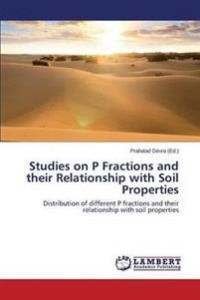
Liknande böcker
Studies on P Fractions and Their Relationship with Soil Properties : Distribution of different P fractions and their relationship with soil properties
Bok av Devra Prahalad
Phosphorus is one of the essential element for both plant and animal life. The chemistry of soil phosphorus is complex owing to the ability of each phosphate ion to form a multiplicity of compounds of different composition and variable solubilities. Phosphorus exists in soils both in inorganic and organic forms. The inorganic P mainly occurs as fluor-apatite, carbonate-apatite and oxy-apatite, mono, di and tri-Ca-P and Fe-P and Al-P. Organic P is present mainly as phytin and its derivatives, nucleic acid and phospholipids. In soils, 20-85% of the total P is in organic form, but plant can utilize organic P only after it is mineralized. The plants mainly depend upon inorganic P forms (H2PO4-, HPO42-, PO43- depend on soil pH) for their P requirement. Phosphorus adsorption by soils has a important role in sustaining and building up phosphorus supplying capacities of soils. Transformation of P into insoluble and unavailable compounds is considered as primary cause of inefficient utilization of phosphatic fertilizers.
Visa pris inkl. frakt Inkl. frakt
Studies on P Fractions and Their Relationship with Soil Properties
502 kr
Finns i lager







